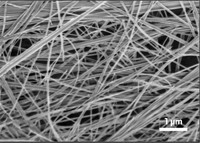Advertisement
Grab your lab coat. Let's get started
Welcome!
Welcome!
Create an account below to get 6 C&EN articles per month, receive newsletters and more - all free.
It seems this is your first time logging in online. Please enter the following information to continue.
As an ACS member you automatically get access to this site. All we need is few more details to create your reading experience.
Not you? Sign in with a different account.
Not you? Sign in with a different account.
ERROR 1
ERROR 1
ERROR 2
ERROR 2
ERROR 2
ERROR 2
ERROR 2
Password and Confirm password must match.
If you have an ACS member number, please enter it here so we can link this account to your membership. (optional)
ERROR 2
ACS values your privacy. By submitting your information, you are gaining access to C&EN and subscribing to our weekly newsletter. We use the information you provide to make your reading experience better, and we will never sell your data to third party members.
Energy Storage
Thin-film battery breaks energy storage record
Careful manufacturing yields a lithium-ion battery for compact medical devices
by Katherine Bourzac
January 3, 2020
| A version of this story appeared in
Volume 98, Issue 1

A tiny new battery that packs an energy punch could power more compact next-gen pacemakers and other medical devices. The LiCoO2 battery was developed by researchers at CEA-Leti, part of the French atomic energy agency. Battery chemist Sami Oukassi says it has a higher energy density than any thin-film battery reported so far. The battery is just 3.10 by 1.70 mm in area—which doesn’t leave much room for energy-storing electrode materials. Oukassi says his group improved the thin-film battery’s performance by making a thicker layer of LiCoO2 at higher yield. Thin-film batteries generally use less than 10 µm of the material; the CEA-Leti group was able to double this value while still achieving good-quality films that provide an easy path for charge-carrying lithium ions. “We developed advanced patterning methods for this material—usually you can’t do that on lithium,” Oukassi says. That enabled the team to make a prototype battery that meets the energy requirements for prototype medical devices such as disease-monitoring smart contact lenses. Oukassi, who described the research at the International Electron Devices Meeting in San Francisco in December, says the group hopes to encapsulate the battery so that it is safe for use in future wearable and implantable medical devices.




Join the conversation
Contact the reporter
Submit a Letter to the Editor for publication
Engage with us on Twitter